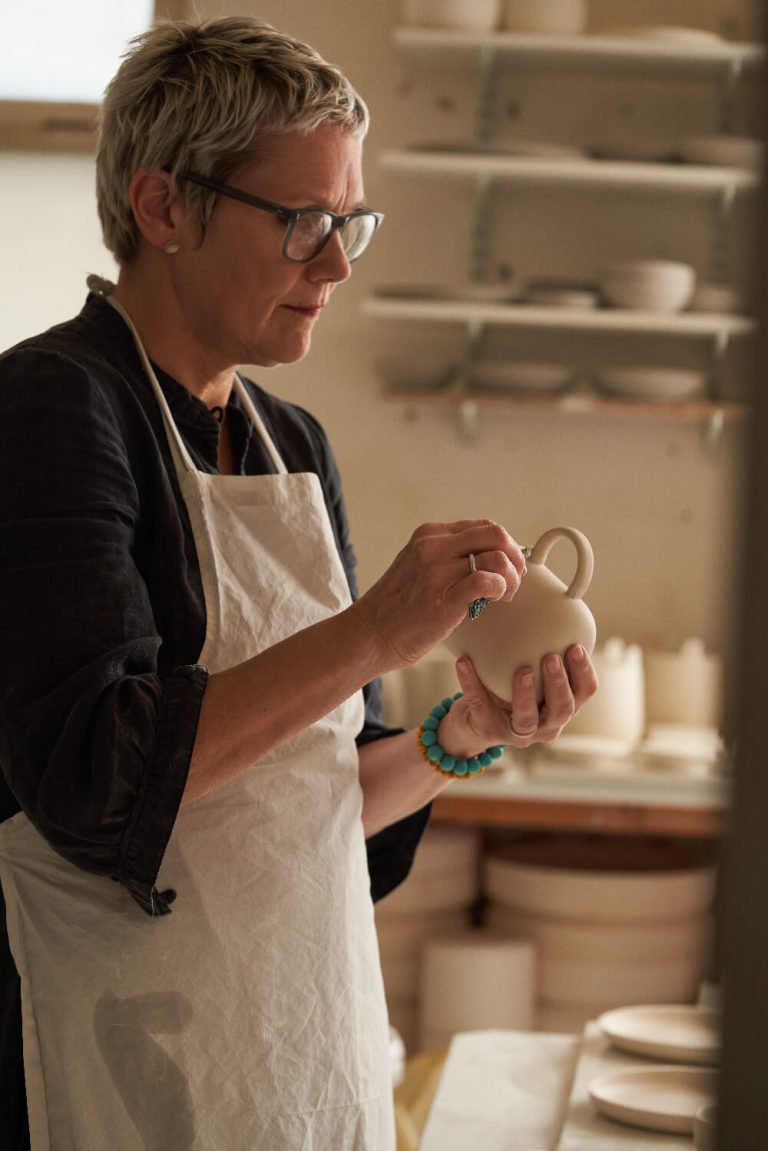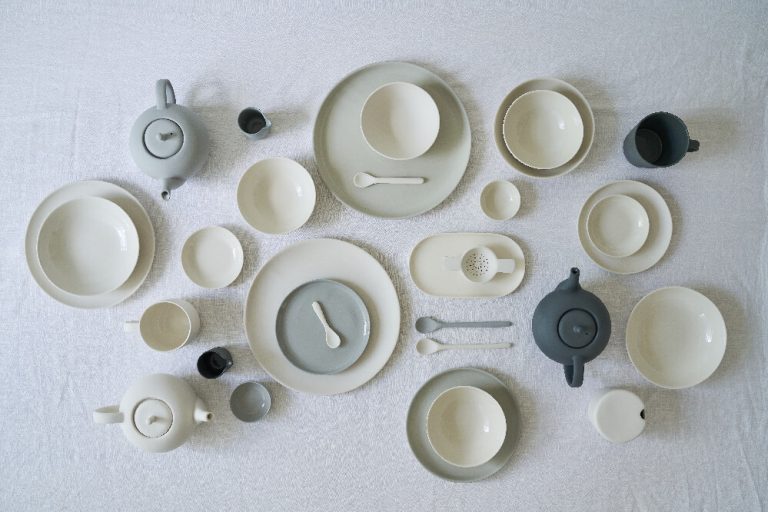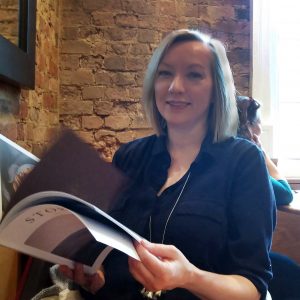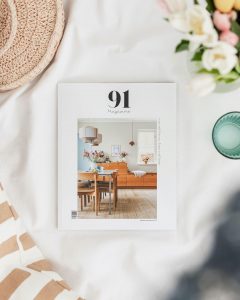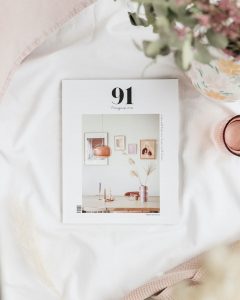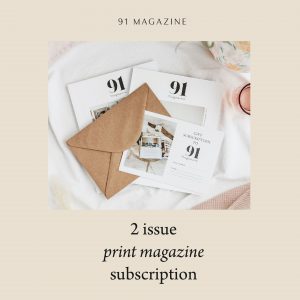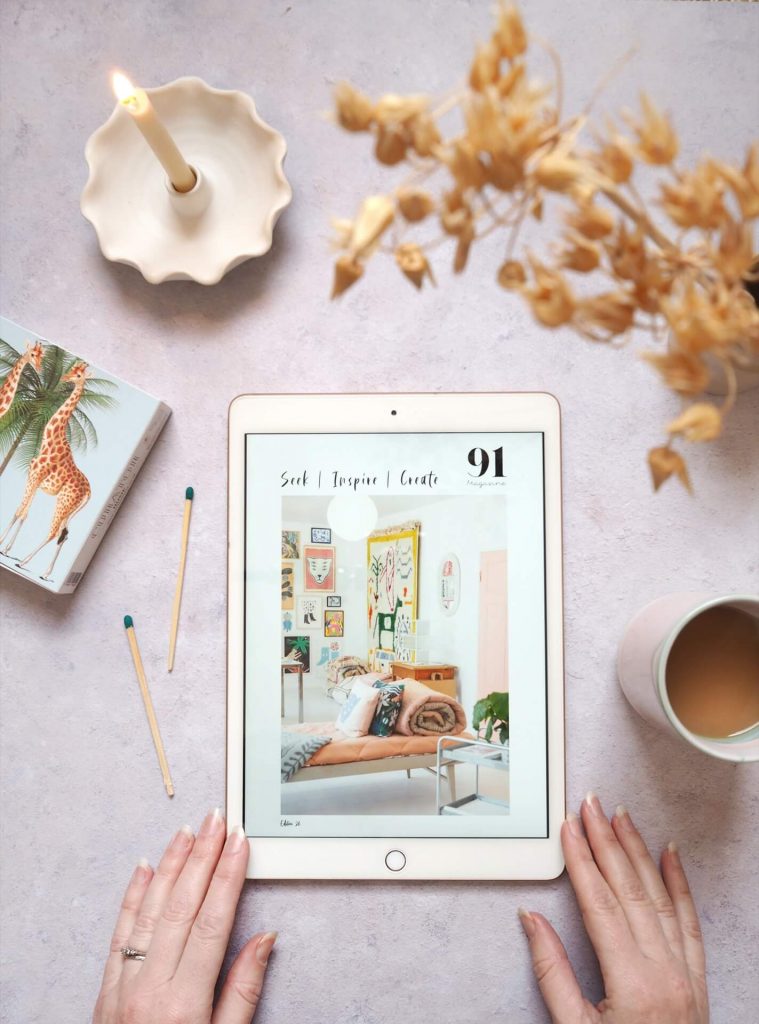Hi Sue! How would you describe your ceramic work, in a nutshell?
Pared–back coloured porcelain tableware.
How did you get started in your career as a ceramics designer?
I first came across pottery when I opted to do pottery at A level. I didn’t have any ambition to be a designer or a maker – I loved art at school and strolled into an A Level art and craft course and became hooked on clay. I followed this up with a part time job at a local pottery and after a year, the potter suggested that I apply for a degree course in ceramics. So I did!
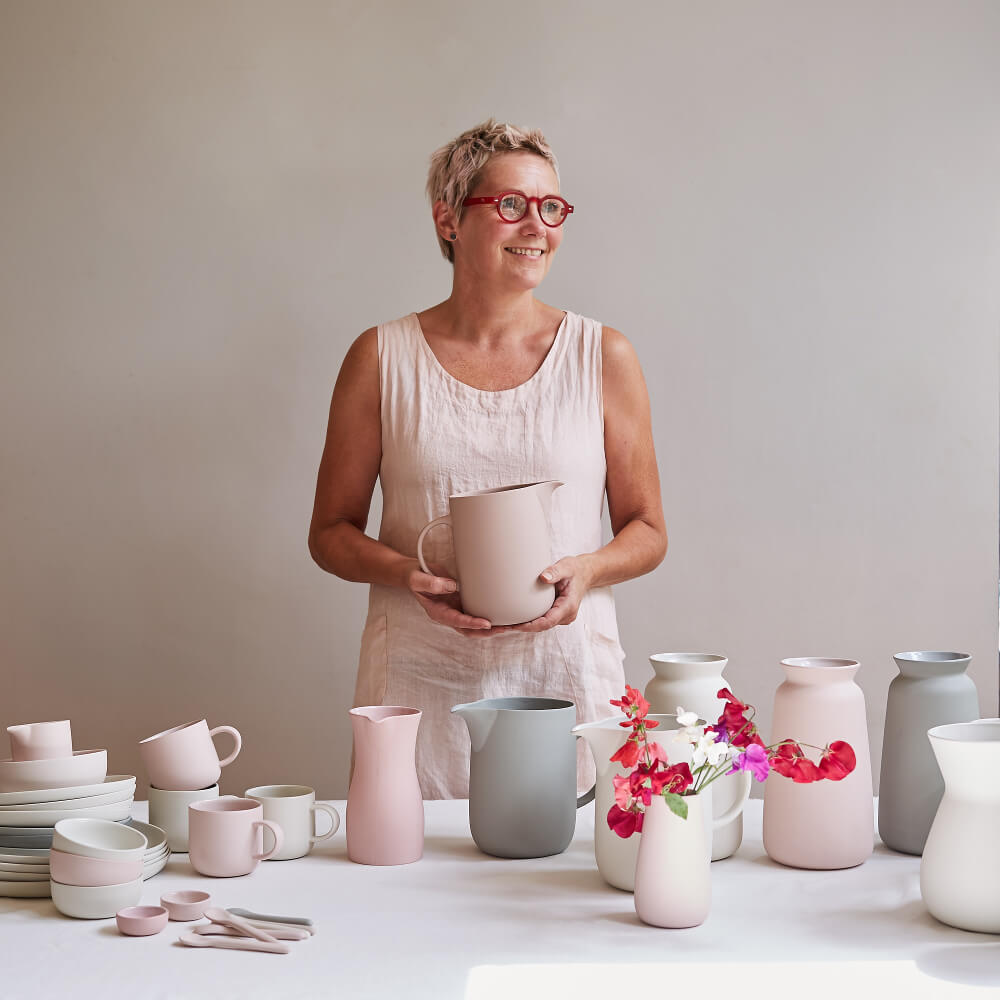
What did you do before setting up your business?
After graduation, I was offered a job at Wedgwood as a designer. I went on to design for several homeware companies, including IKEA, who I have worked with for over 20 years, as well as M&S, John Lewis, Next and Sainsburys, designing tableware and homeware. In between designing I always had my pottery studio, and after a couple of stints working in-house I decided to concentrate on making full time – I missed the flexibility of being able to design for myself rather than follow a client led brief.
Where do you find creative inspiration?
Inspiration comes from a variety of resources, landscape in particular, big broad skies and coastlines are so impactful, but also, architecture, and historical ceramics. It was so inspiring at Wedgwood to have an archive full of historical references to tweak and bring up to date with a new concept, I think this has stayed with me.
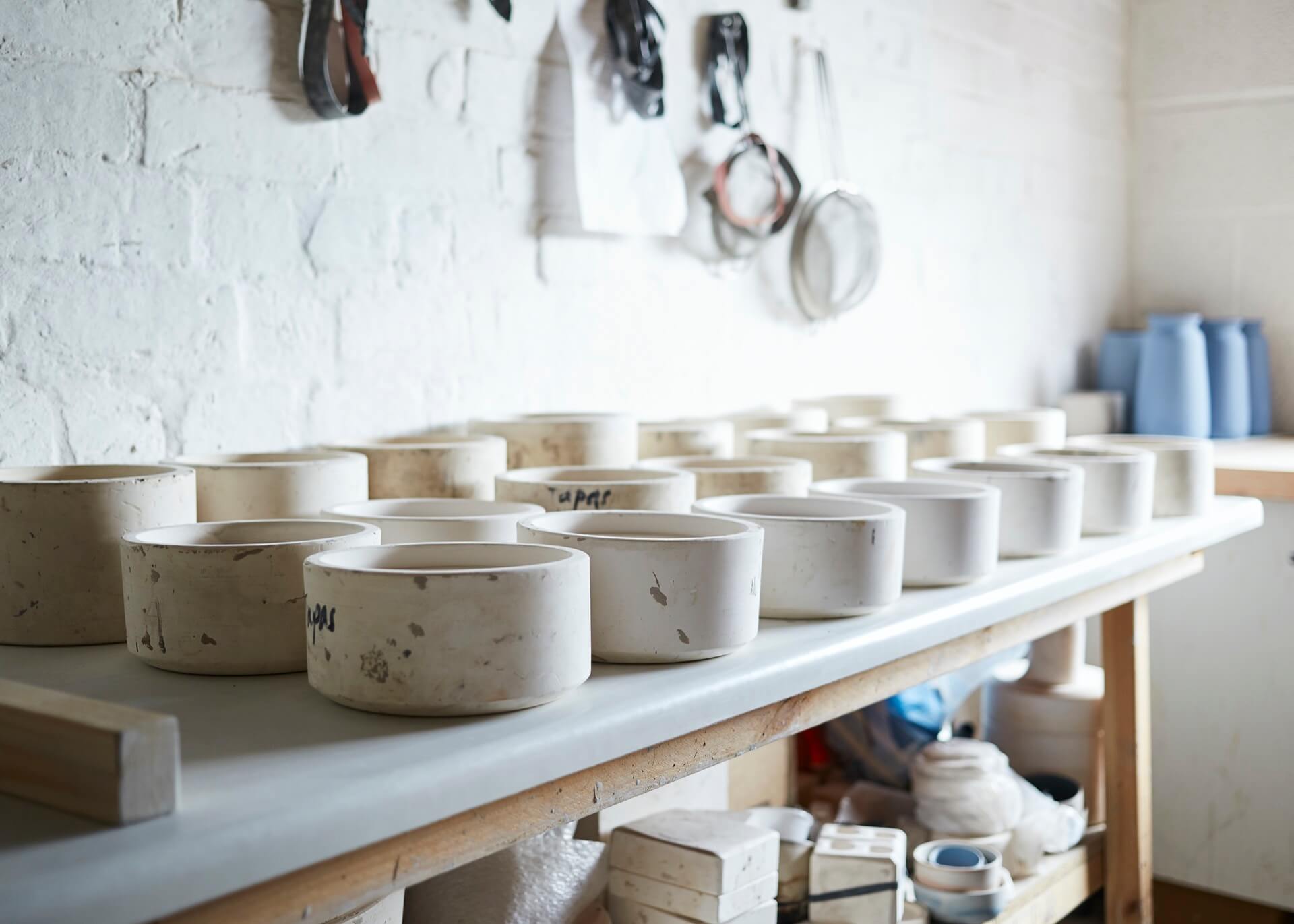
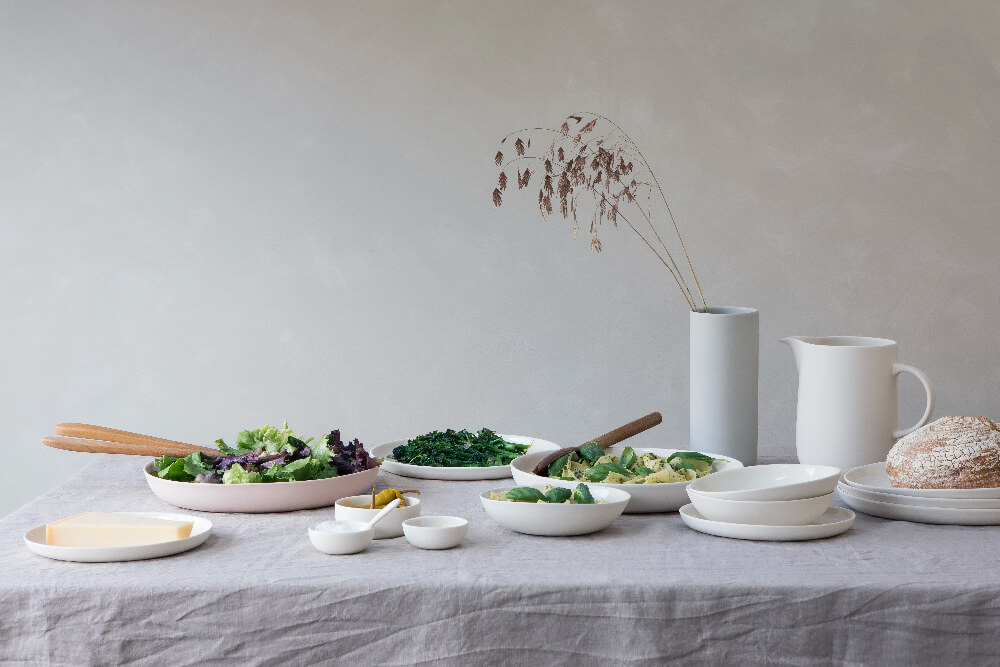
How would you describe your style?
Minimal, clean lines and contemporary. I like to pare back detail, provide a twist and develop an idea into a contemporary style. Recently I studied a range of 18th century Staffordshire creamware at the V&A museum; that era was full of details, embellishments and swirls, I pared back the detail until I was left with a delicate curve on a cup shape and slight swirl on the handle. The coloured clay I use provides a solid canvas to show off form, the unglazed outside used simply looks very contemporary.
I’ve worked for a Scandinavian company too for over 20 years, so this Nordic minimalism has also had an impact on my style.
Are there themes that run through your work?
Strength of form. My job at Wedgwood was a shape designer. I love form and function, both have to work hand–in–hand, so perfecting scale and functionality is important, a handle has to have the right weight, thickness and curve to be ergonomic – things have to work but can be beautifully simple at the same time.
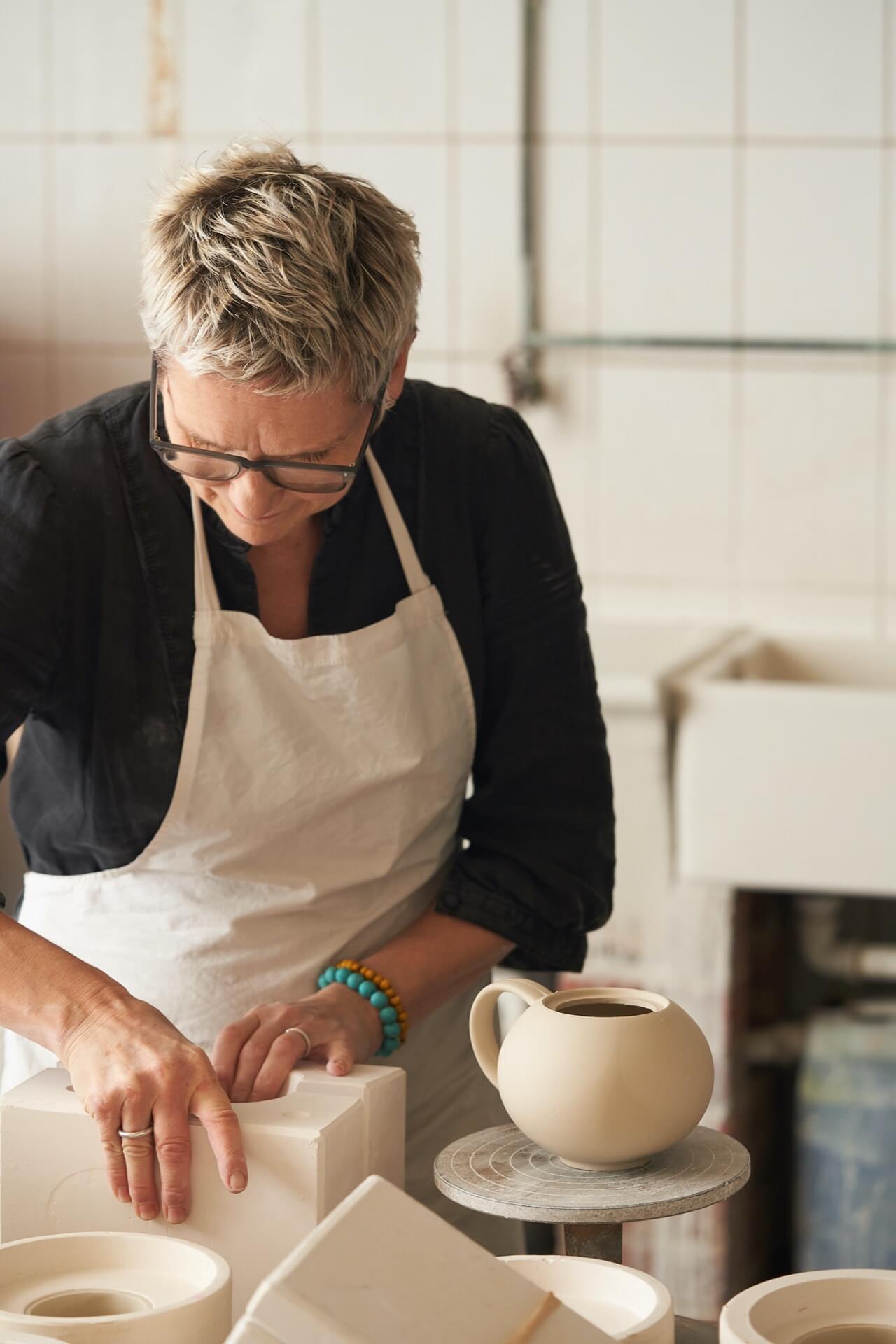
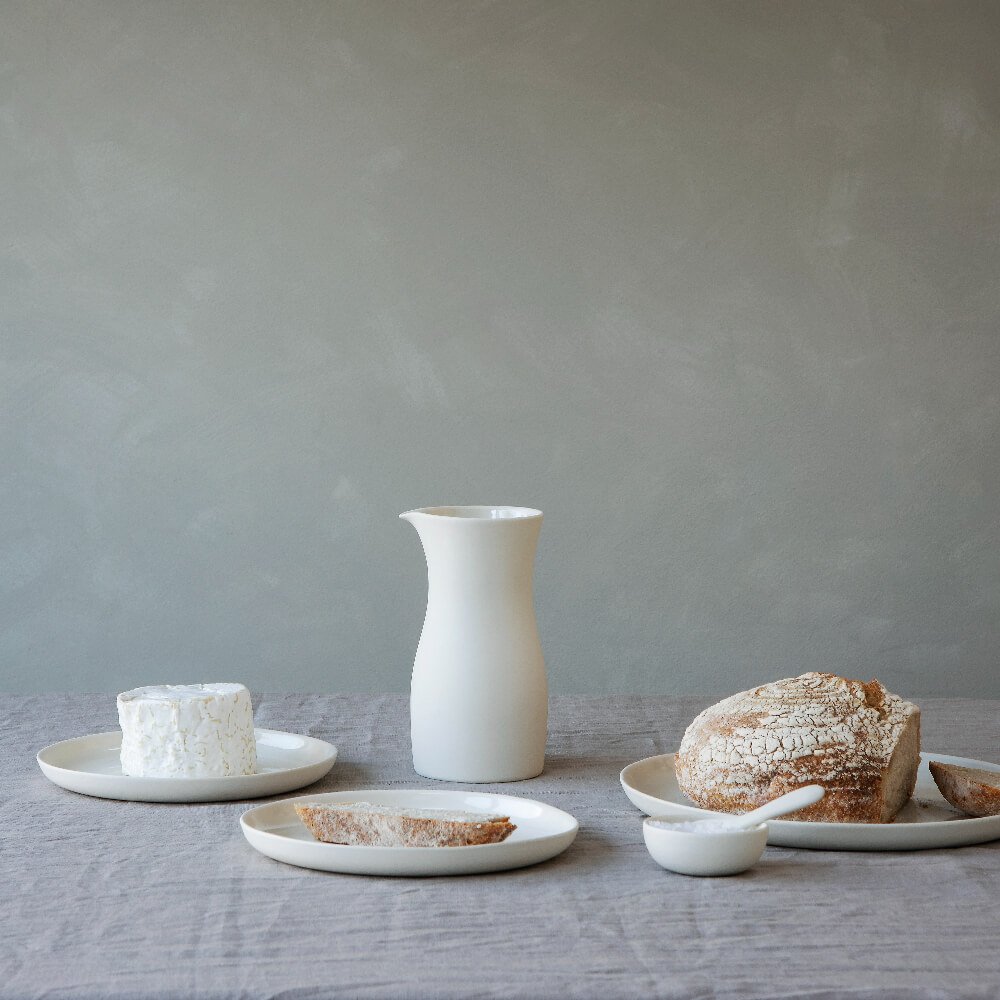 Describe a typical working day…
Describe a typical working day…
I start with an early morning dog walk with my two cockapoos – about an hour gives me time to stretch my legs and think about what’s coming up during the day. Ideally I’m up and out by 6am, mainly so I can get back for a breath work class on Instagram at 7am. If I’m late I try to join a qigong class on Instagram at 8am. It’s a habit that sprang up during lockdown, creating a wonderful supportive community with others in the group. Sometimes I miss both and go for a run with my dogs followed by yoga flow at home. I find it really important to have a focus like this to set myself up for the day.
I usually start work around 9am; admin, catching up with emails, and online orders. I have help in the studio to make work as well as packing and admin, so we all have a few minutes to catch up on the priorities for the day. I don’t take any breaks except a quick half an hour for lunch, I like to press on and remain focused. My jobs vary depending on priorities; I can pretty much leave the slipcasting and most of the finishing jobs to my studio assistants, although I love sitting down and sponging the edges of everything, it’s such a satisfying job. My main production role is to glaze everything and pack the kilns, I’m just starting to train a couple of others on these jobs, so that we are all proficient at each stage of making.
What are the values behind your business?
We are a small craft business, using quality materials to make quality tableware. It’s not for everyone, but we strive to make the best for everyone that loves to use it.
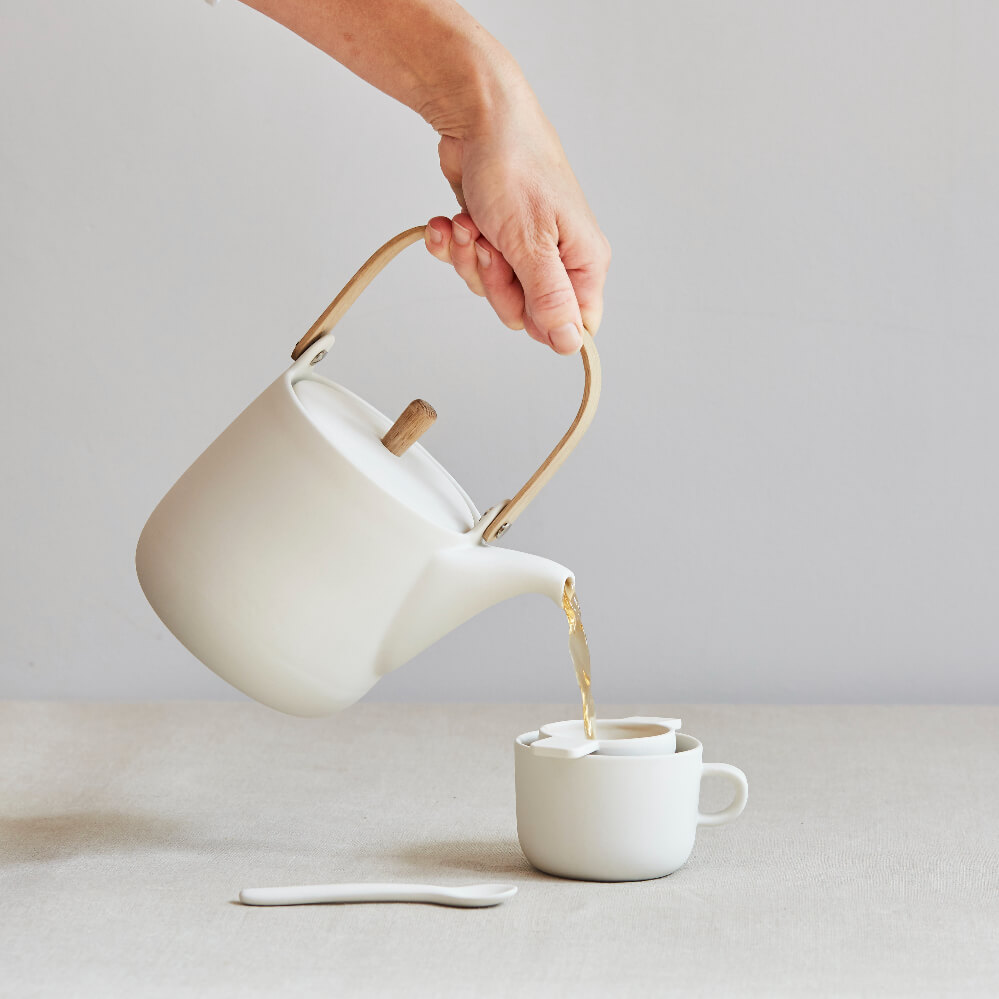
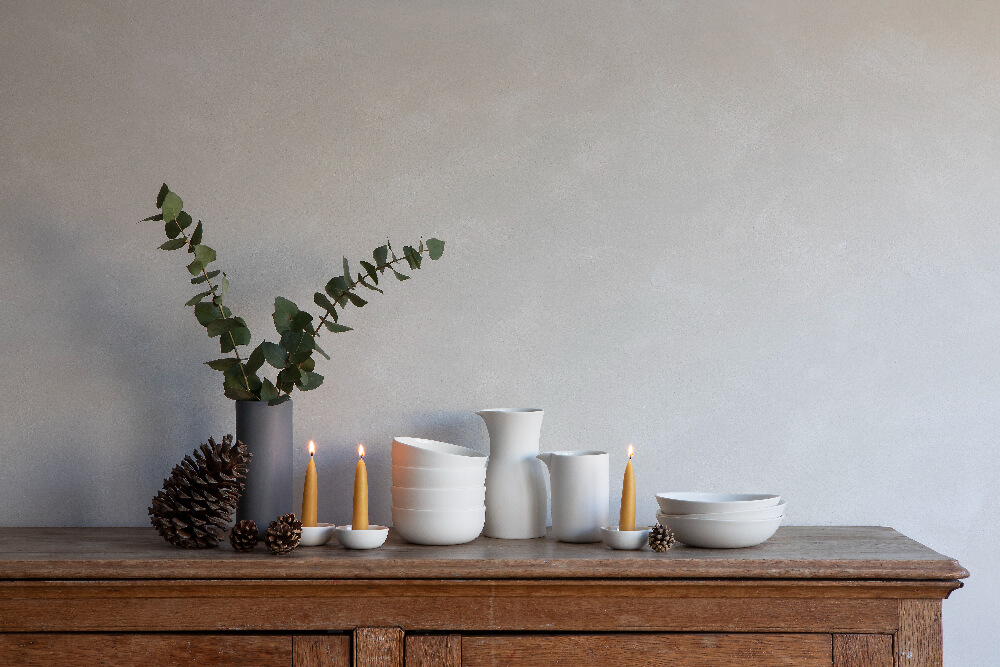
What sort of space do you work in?
I’ve moved to a larger studio in a rural setting during the last year. The space is light and bright and airy, with lots of room for making, it’s a lovely space to work in. I also have space for a showroom, so I can open the space up for events and sales and invite the public in.
Tell us about your neighbourhood…
I’m just outside a small village, North Kilworth, which is in south Leicestershire. We have a glass front to the building so we can look over fields, very lucky.
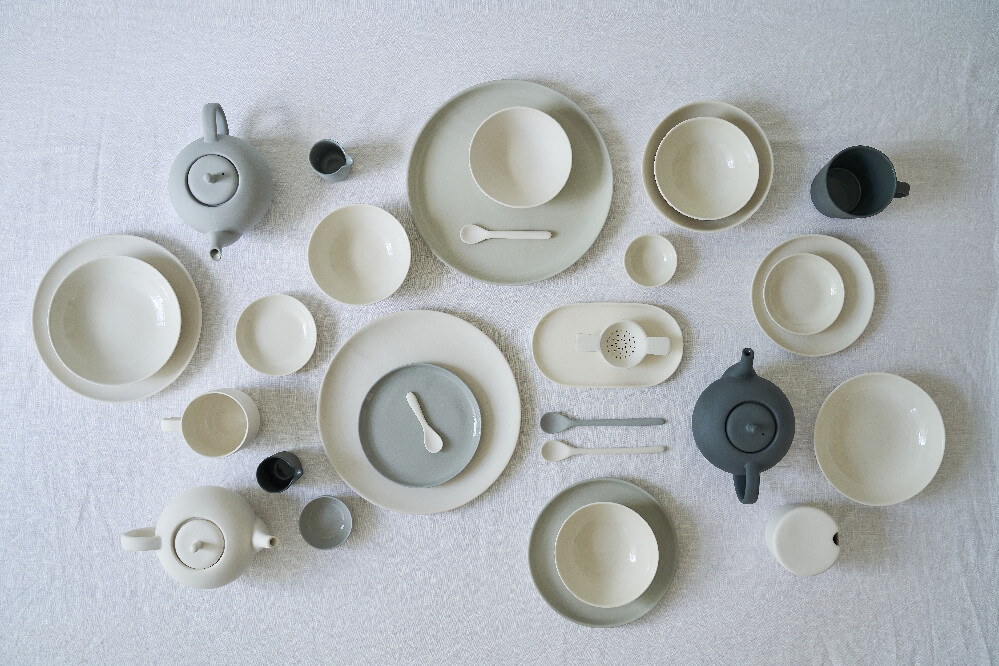
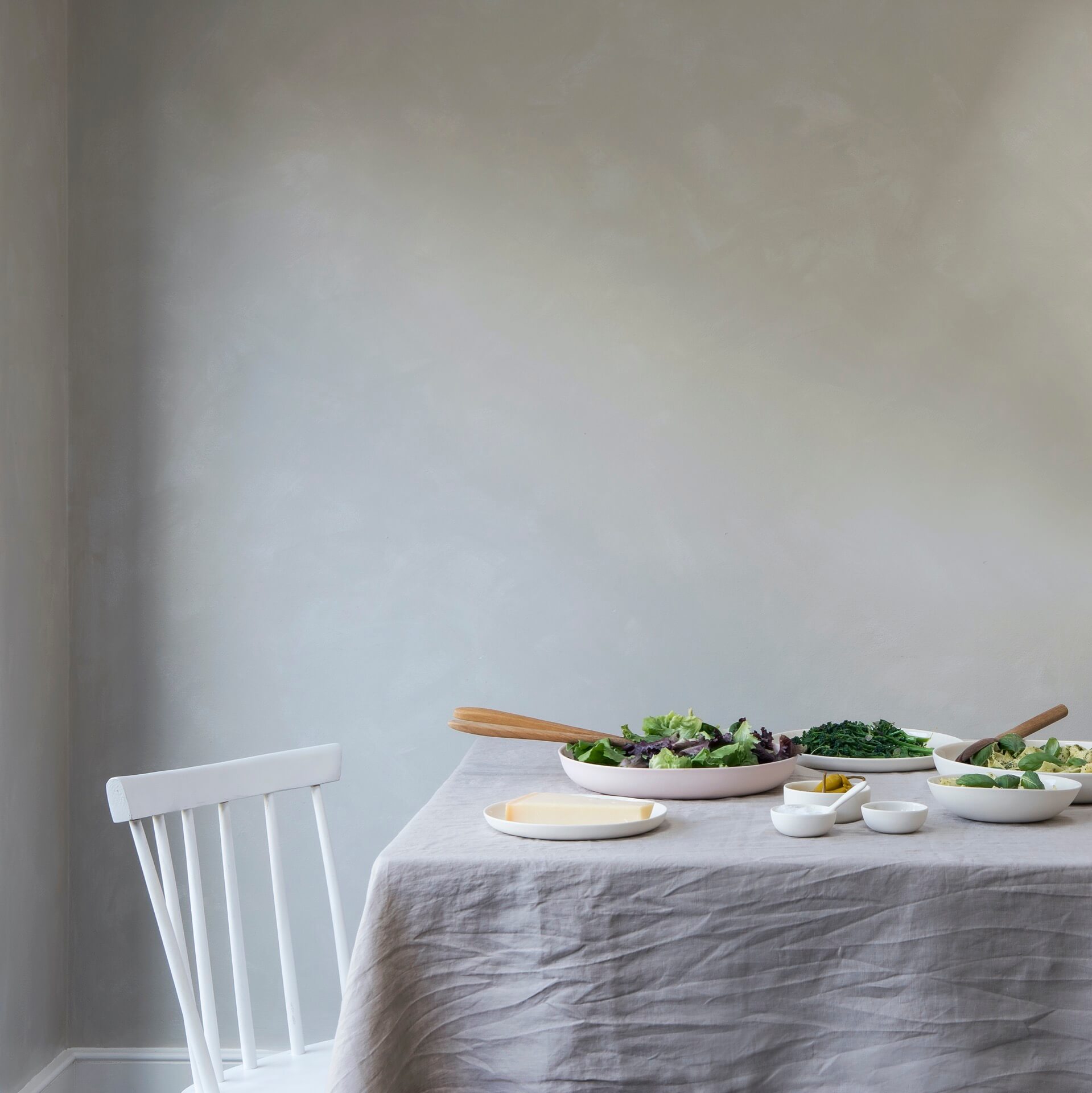 How valuable is the online community to your work?
How valuable is the online community to your work?
I feel very connected to Instagram in particular and have made great friends through the platform and have actually met up with several through craft events. It’s a great supportive community, I always try to support activities, it helps to increase engagement and brings more people together. I think we all appreciated it greatly during lockdown when many groups formed after all our usual events were curtailed.
Working as an independent maker – what are the joys, and what are the challenges?
The biggest joy is the freedom to create without limits. After years working as a designer and designing to briefs set by someone else, it’s great to be able to follow my own direction and judgement to create my own collection. The challenges… well, I suspect this year will be particularly difficult, the major challenge will be the energy crisis, it’s expensive firing kilns!
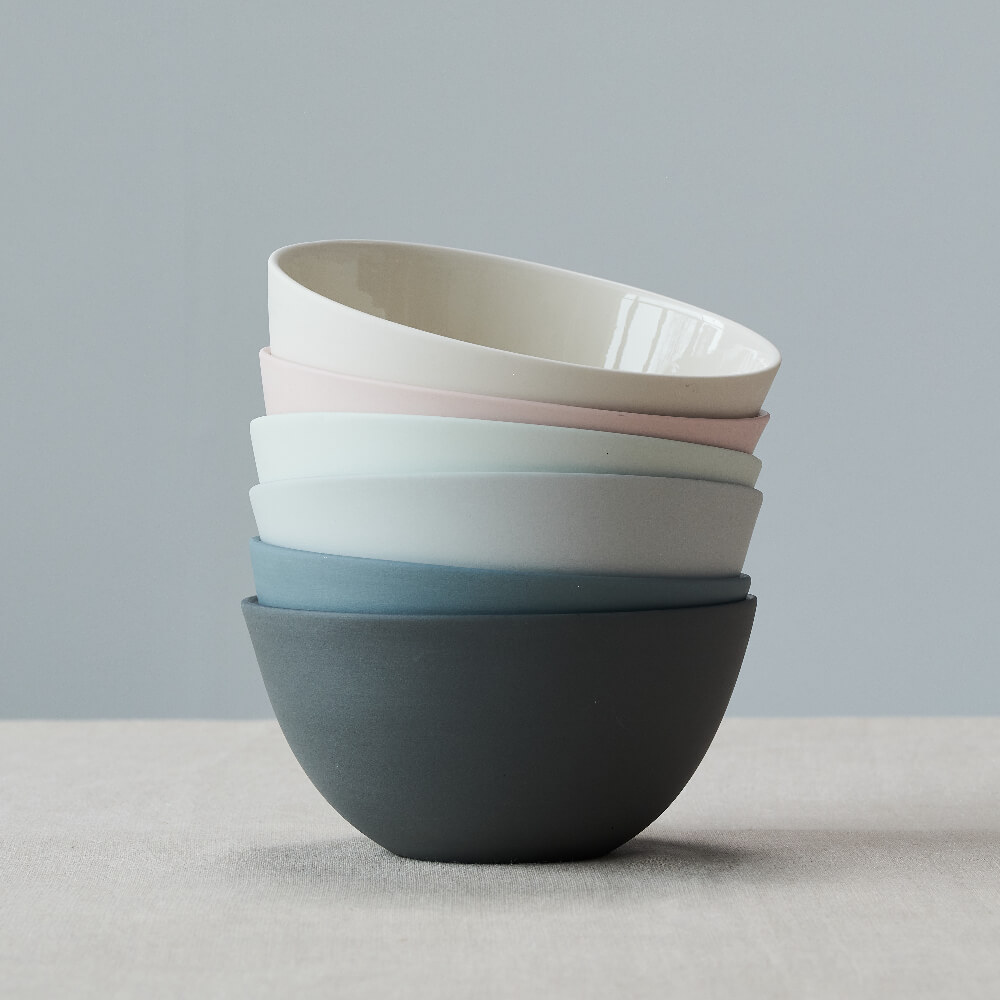
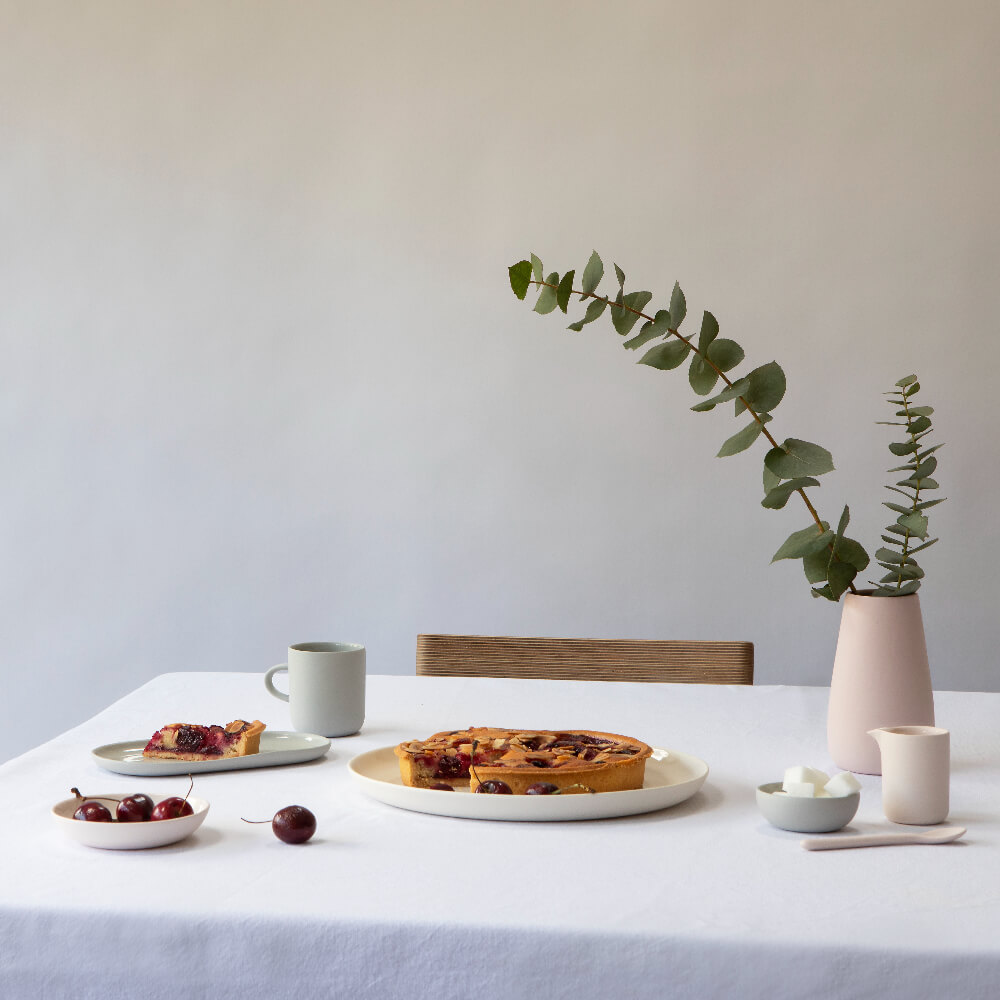
How do you approach marketing and PR?
At the beginning of the year I set up a marketing plan and arranged it into each quarter, deciding what the overall aim is and what the big stories will be. I arrange product photo shoots accordingly. I usually start thinking about spring at the end of the year so I have a plan for Valentine’s and gift buying which can roll into spring, for example. It’s always good to have a bank of really strong images, whether it’s for mail shots or applications to craft fairs and interviews like this. A valuable resource is The Design Trust, who actively support small creatives with business and marketing strategies throughout the year – very, very useful.
What have been your business highlights so far?
Well, there’s a couple: I’ve written a book with another potter, Linda Bloomfield, which will be released in February (2023), it’s a step–by–step guide to making pottery: Design and Create Contemporary Tableware, published by Bloomsbury.
Last year a highlight was moving to my new studio! Keith Brymer Jones, my fellow judge on the Great Pottery Throwdown came to officially open it, so we had a studio full of lovely people to celebrate the new place.
In terms of work, I feel privileged to have made work for a variety of cafes and restaurants, as well as shops. I made a range of tableware for The Artisan Baker in Stroud and Cheltenham, they produce the best cakes ever! I’ve also worked with the very talented Kirk Haworth at Plates London, and produced tableware for his plant–based menu, again the best food I’ve ever tasted. I also worked with a factory in Stoke-on-Trent to produce bone china versions of my shapes, so that I can work on bigger projects. They produced work for me for new restaurant, The 22 in Grosvenor Square, London.
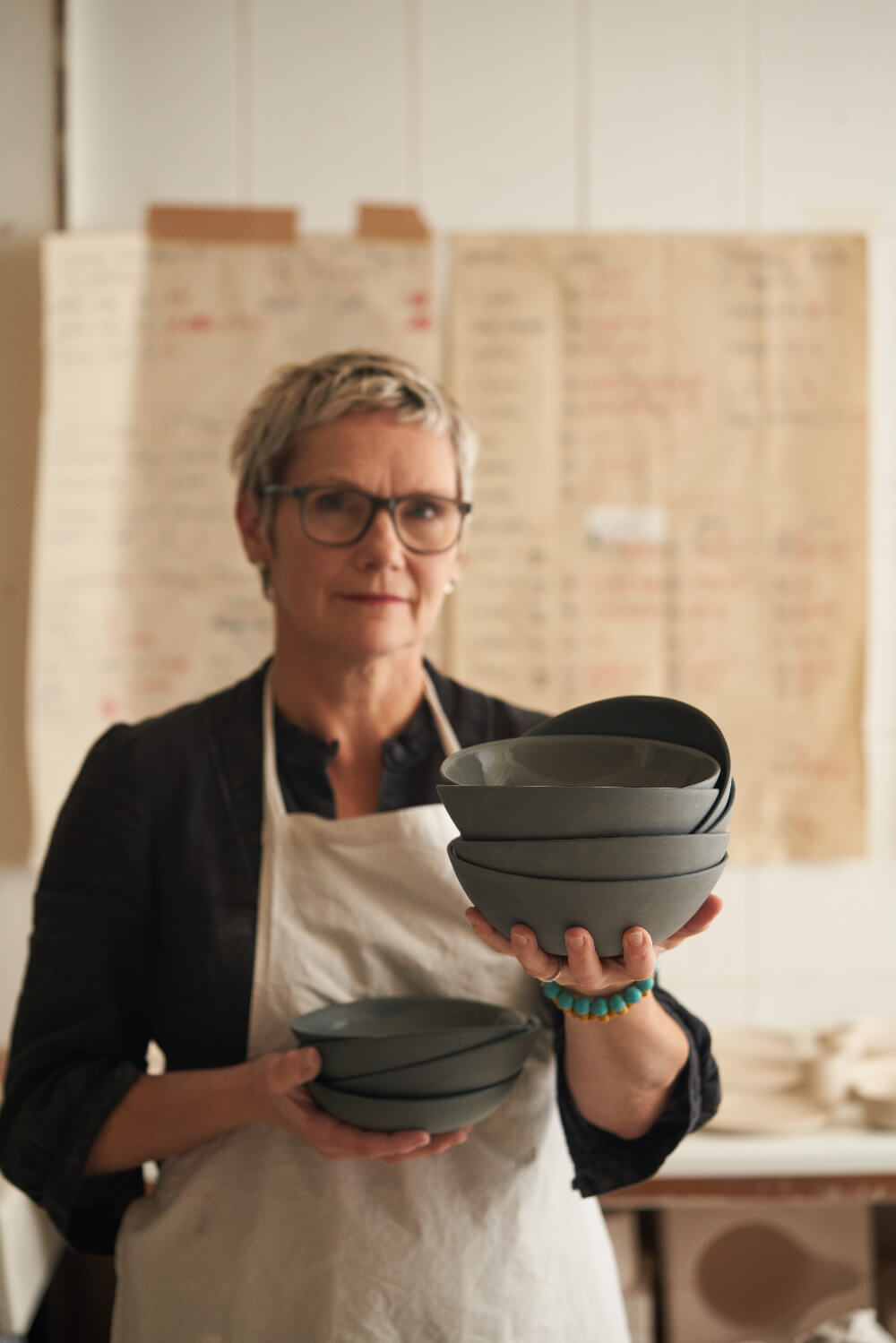
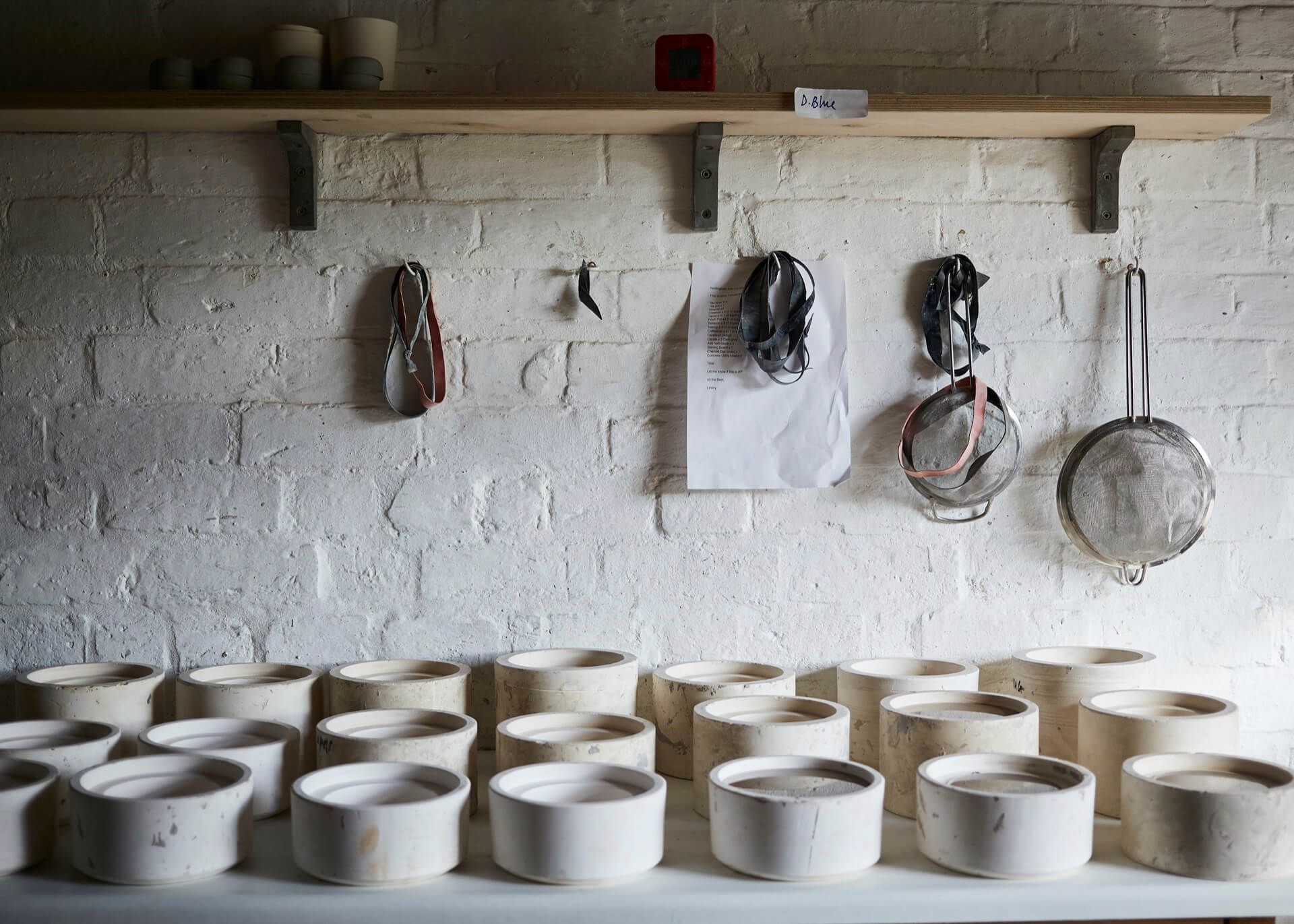 Where can people find your work?
Where can people find your work?
Online on my website: suepryke.com, but also at small independent retailers across the country, as well as The Conran Shop, The Newt in Somerset, and many restaurants.
Do you have any creative pastimes or hobbies?
I love dressmaking! I don’t have much time for it, and I’m not an expert, but I always have ideas about what I can make next.
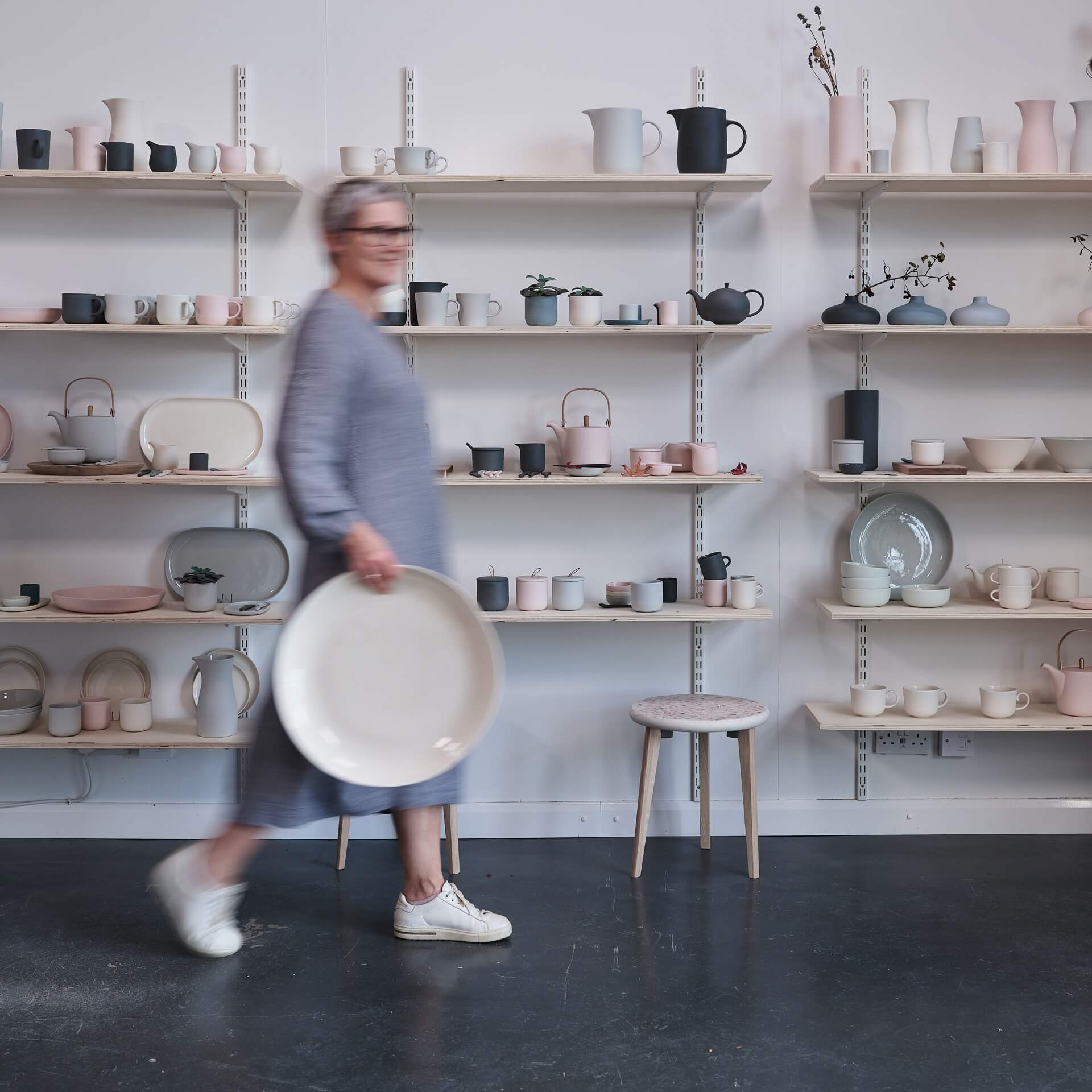
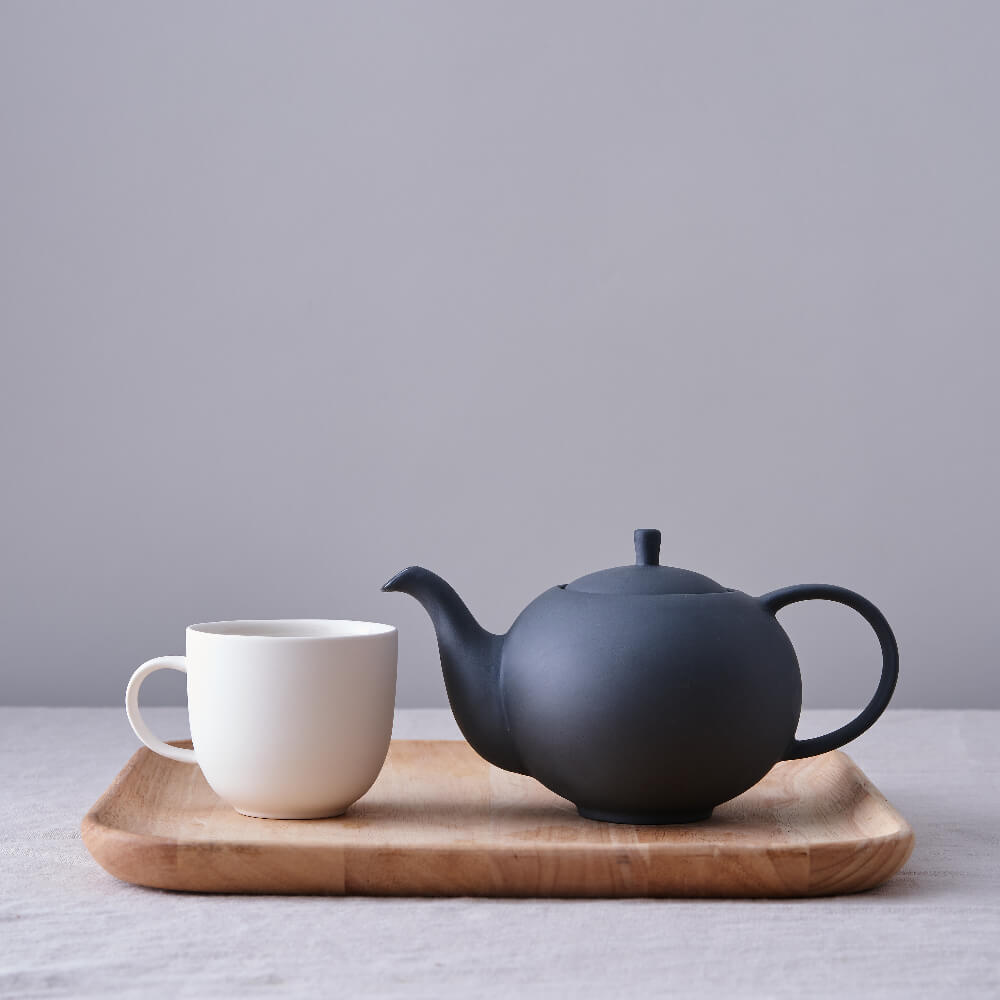
Any good advice for makers who are just starting out?
Ask lots of questions, do lots of research and go for it!
What does the next year hold for you?
More work with restaurants. I’ve really enjoyed working with chefs, they need a canvas for their creative ideas and it’s a great opportunity to develop new ideas around food.
QUICK-FIRE QUESTIONS
Describe your work in three words: Minimal, functional, contemporary
What are your creating rituals? I need a quiet and tidy space… preferably with a nice view!
Tea or coffee? Tea
Mountains or sea? Sea
Night owl or early bird? Early bird
I wish someone had told me… to ask more questions!
